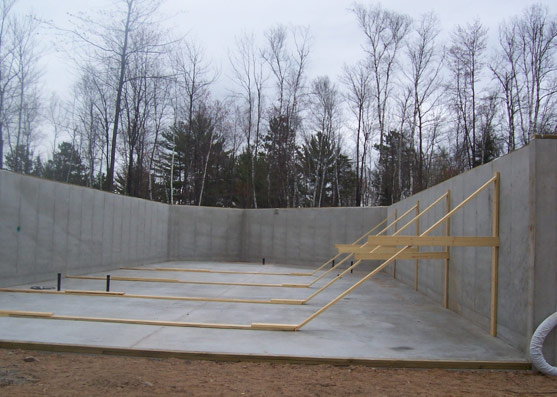While historically preferable to other traditional building materials, concrete has many important drawbacks, such as overall mass, installation time and poor insulating properties. It is extraordinarily heavy and requires a labor intensive and time-consuming installation process. Achieving appropriate insulation using concrete is difficult.


Concrete is inefficient
By itself, concrete offers very little resistance to heat flow. For example, a 7-inch thick slab of poured concrete has the same R-value as a single pane of glass (R-1.5). An additional difficulty is that concrete walls often crack due to shifts in the ground and water pressure, creating leaks and allowing mold and mildew growth. Even without cracks, concrete is porous, typically creating basement living areas that are damp, unpleasant, unhealthy environments.

Concrete is Time Consuming
- Require multiple steps for installation
- Several trips to the jobsite with heavy equipment
- 200 man hours to install
- Extensive form work including transport, placing, oiling, stripping, cleaning and removal
- Bracing is needed to resist soil loads prior to the installation of the floor system
- Concrete walls are over designed for holding the weight of a house, yet are challenged by backfill loading.
- Concrete needs to be damp proofed to keep out moisture
- Vapor barrier systems that work well are extensive and expensive
- Concrete itself has little inherent R-value – insulation is applied in multiple steps
- Curing process is affected by the elements – steps must be taken to protect integrity in colder temperatures including covering, adding calcium chloride and using heated water


